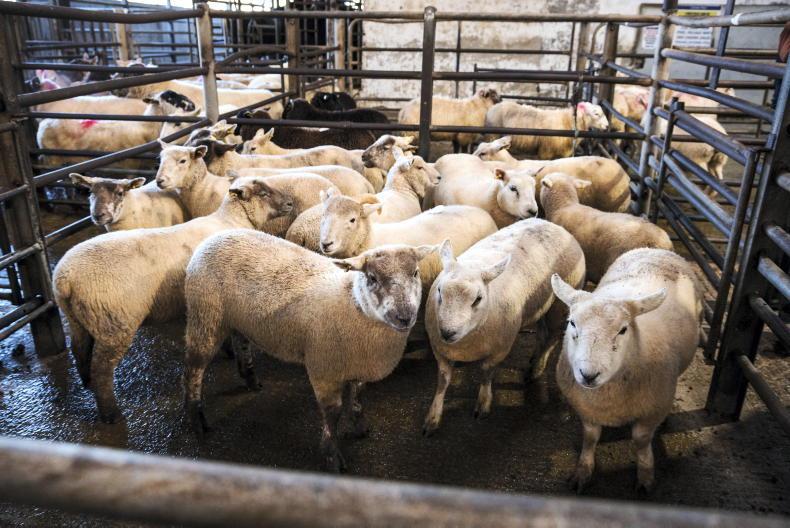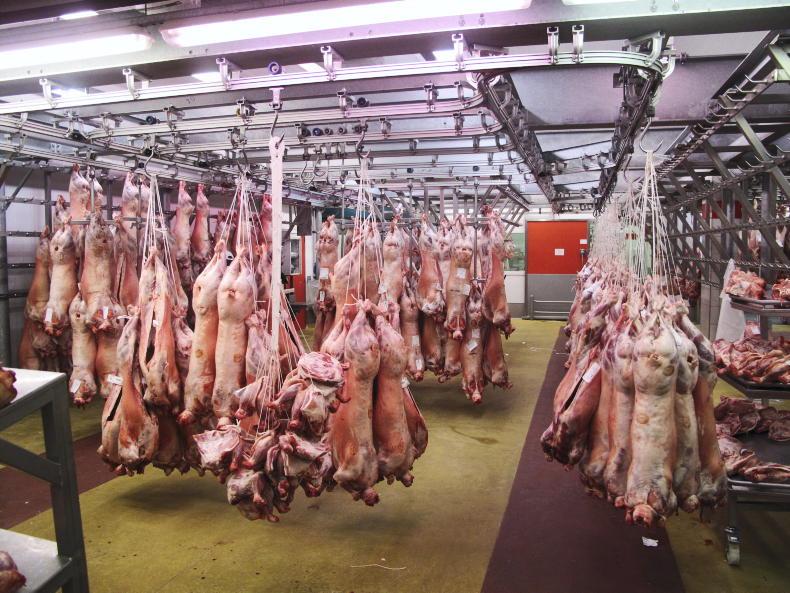European Union (EU) sheepmeat exports fell by 13.2% over the first half of 2023, according to the European Commission.
In its latest short-term outlook for EU agricultural markets in 2023 and 2024, the Commission said that this was mainly due to relative high prices in the EU, which makes the EU less competitive in global sheepmeat markets and keeps lamb and mutton in the domestic market.
The Commission said that while EU sheepmeat exports to the UK stayed stable, other major destinations such as Oman, Qatar and the United Arab Emirates (UAE) showed a significant decline.
As this situation is not going to change in the short term, the outlook market analysis found that sheepmeat exports could drop a further 10% in 2024. However, the Commission said that this could recover by 4% in 2024 if EU prices ease.
Live exports
Elsewhere, EU exports of live sheep increased by 1.7% between January and June this year, despite high domestic prices.

EU sheepmeat consumption is expected to stay stable for 2023.
There was an increase in sheep exports to Libya and Morocco in June 2023 and this compensated for decreases to Jordan, Saudi Arabia and Israel. Overall, EU exports of live sheep are set to slightly grow by 1.5% for 2023 as a whole.
The difficult transport situation through the Black Sea continues to also cause challenges.
In 2024, the Commission forecasts that there will be a further decline of 3% in live sheep exports via this route. Future EU legislation on live animal transport was not taken into account for the outlook analysis.
Imports
Meanwhile, EU sheepmeat imports increased by almost 15% between January and June, coming from New Zealand and the UK.
Overall, EU imports could reach a 10% increase in 2023 and an additional 4.5% in 2024 due to high EU prices and sluggish Asian demand, the Commission found.
The Commission said that there was a decline in the sheep kill in most EU member states during the first half of 2023.

EU exports of live sheep increased by 1.7% between January and June this year, despite high domestic prices.
“EU sheepmeat production is expected to suffer from a structural declining sheep flock, lower grass availability - especially in Mediterranean countries - higher costs for feed and the outbreaks of sheep pox in Spain and recently in Bulgaria.
“Being the most expensive type of meat, EU consumption of sheepmeat is likely to suffer from inflationary pressures the same as other red meat types, but in comparison it can be best favoured by its specific positioning within consumer baskets (religious festivities, cultural),” the Commission said.
It projected that by the end of 2023, EU per-capita consumption of sheepmeat could stay rather stable, up 0.8%.
Read more
EU sheepmeat production falls 6.1% to July 2023
European Union (EU) sheepmeat exports fell by 13.2% over the first half of 2023, according to the European Commission.
In its latest short-term outlook for EU agricultural markets in 2023 and 2024, the Commission said that this was mainly due to relative high prices in the EU, which makes the EU less competitive in global sheepmeat markets and keeps lamb and mutton in the domestic market.
The Commission said that while EU sheepmeat exports to the UK stayed stable, other major destinations such as Oman, Qatar and the United Arab Emirates (UAE) showed a significant decline.
As this situation is not going to change in the short term, the outlook market analysis found that sheepmeat exports could drop a further 10% in 2024. However, the Commission said that this could recover by 4% in 2024 if EU prices ease.
Live exports
Elsewhere, EU exports of live sheep increased by 1.7% between January and June this year, despite high domestic prices.

EU sheepmeat consumption is expected to stay stable for 2023.
There was an increase in sheep exports to Libya and Morocco in June 2023 and this compensated for decreases to Jordan, Saudi Arabia and Israel. Overall, EU exports of live sheep are set to slightly grow by 1.5% for 2023 as a whole.
The difficult transport situation through the Black Sea continues to also cause challenges.
In 2024, the Commission forecasts that there will be a further decline of 3% in live sheep exports via this route. Future EU legislation on live animal transport was not taken into account for the outlook analysis.
Imports
Meanwhile, EU sheepmeat imports increased by almost 15% between January and June, coming from New Zealand and the UK.
Overall, EU imports could reach a 10% increase in 2023 and an additional 4.5% in 2024 due to high EU prices and sluggish Asian demand, the Commission found.
The Commission said that there was a decline in the sheep kill in most EU member states during the first half of 2023.

EU exports of live sheep increased by 1.7% between January and June this year, despite high domestic prices.
“EU sheepmeat production is expected to suffer from a structural declining sheep flock, lower grass availability - especially in Mediterranean countries - higher costs for feed and the outbreaks of sheep pox in Spain and recently in Bulgaria.
“Being the most expensive type of meat, EU consumption of sheepmeat is likely to suffer from inflationary pressures the same as other red meat types, but in comparison it can be best favoured by its specific positioning within consumer baskets (religious festivities, cultural),” the Commission said.
It projected that by the end of 2023, EU per-capita consumption of sheepmeat could stay rather stable, up 0.8%.
Read more
EU sheepmeat production falls 6.1% to July 2023












SHARING OPTIONS